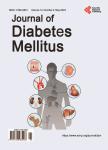Study of hsCRP, adiponectin, NF-κB in low bodyweight, standard bodyweight and obese subjects with type 2 diabetes mellitus in India
Study of hsCRP, adiponectin, NF-κB in low bodyweight, standard bodyweight and obese subjects with type 2 diabetes mellitus in India作者机构:Department of Biochemistry Sriram Chandra Bhanj Medical College Cuttack India Department of Medicine Sriram Chandra Bhanj Medical College Cuttack India
出 版 物:《Journal of Diabetes Mellitus》 (糖尿病(英文))
年 卷 期:2012年第2卷第4期
页 面:386-392页
学科分类:1002[医学-临床医学] 100201[医学-内科学(含:心血管病、血液病、呼吸系病、消化系病、内分泌与代谢病、肾病、风湿病、传染病)] 10[医学]
主 题:Low Bodyweight Type 2 DM hsCRP NF-κB Adiponectin
摘 要:Introduction: Low bodyweight type 2 DM is a distinct clinical entity having many inherent peculiarities seen in India and developing countries, constituting 11% to 25% of type 2 diabetic subjects. Our study aimed at assessing the prevalence of inflammatory markers like hsCRP, adiponectin and NF-κB expression in peripheral blood mononuclear cells in subjects with type 2 DM in relation to BMI. Materials and Methods: 57 consecutive type 2 diabetics were recruited for study, classified as Low Bodyweight (A = BMI 18.5), Standard weight (B = BMI 18.5 - 24.99) and Obese (C = BMI ≥ 25). Group D comprised 14 healthy controls. They were evaluated for clinical parameters, FBG, 2hrPPBG, HbA1c, lipid profile and above mentioned inflammatory markers. Results: Serum hsCRP was significantly higher in all group of diabetics as compared to Group D but was lowest in Group A. Adiponectin levels were highest in Group D, similar in Groups B and C but lowest in Group A. NF-κB expression, though higher in diabetic subjects than controls (OD = 0.041 ± 0.006), was least in Group A (OD = 0.045 ± 0.005). Discussion and Conclusion: Our study revealed that Indians with type 2DM are in a pro-inflamematory state. Low bodyweight type 2 diabetics had the least pro-inflammatory load. This further supported the earlier observation of lesser macrovascular disease load and testifying that Low Bodyweight type2DM constitutes a distinct entity.



